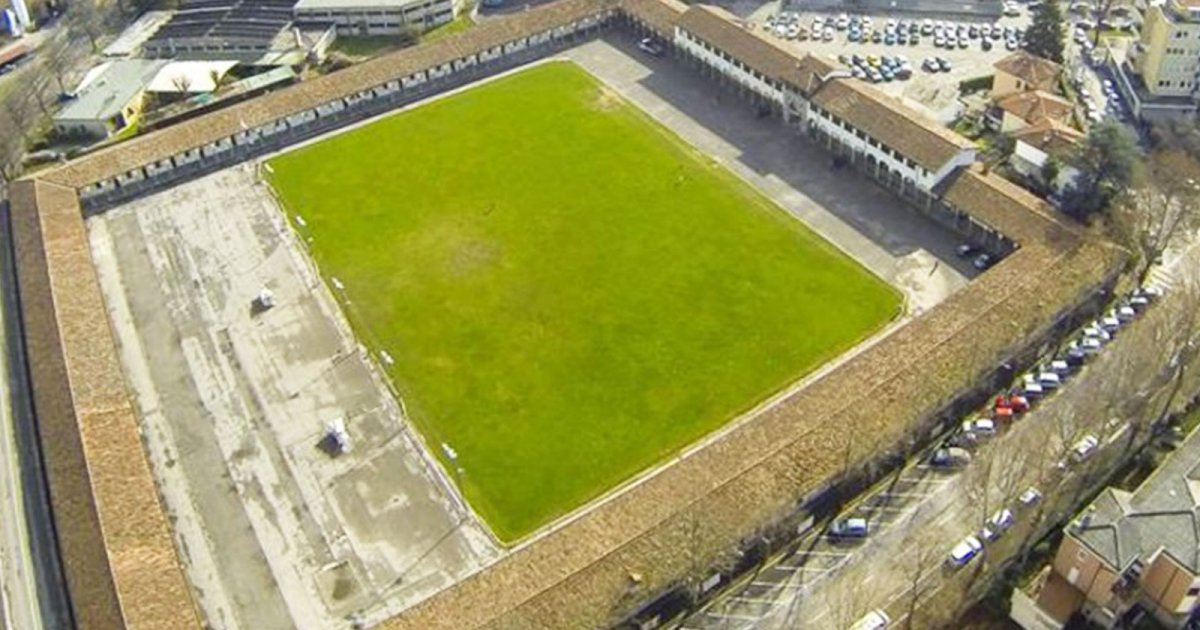LAZZARETTO, Lazzaretto
 Language: English / USA
Language: English / USA
Hi, my name’s Jill, and I’m your personal guide. Along with MyWoWo, I’d like to welcome you to one of the wonders of the world: the Lazaretto of Bergamo.
Many people who pass by here on their way to the stadium are unaware that hundreds of years ago, plague sufferers used to come here to spend the last days of their lives in the Lazaretto.
This enormous building dates back to the early 16th century, and was erected in the countryside, well away from the town center, to halt the spread of the plague.
Inside, there is a huge grass courtyard, at the center of which once stood the church of San Rocco and San Sebastiano, to whom hopes were entrusted for a miraculous recovery. The infected were lodged in small rooms that can be seen from the portico, each with a small door and a window.
Inside the rooms, there is a fireplace in the middle of the wall, a toilet with a small window to let the air in, a washbasin and a simple wall cupboard. The rooms were lit with oil lamps or candles.
The townspeople were convinced that the plague was a punishment from God, and they would take part in lengthy processions to ask for forgiveness for their sins; unfortunately, there was little else they could do, because the remedies available at the time were entirely ineffective, and the patients, who were already very ill when they entered the Lazaretto, died within a few days.
The worst outbreak of plague was the one in 1630, which is also featured in “I Promessi Sposi” (The Betrothed), the famous novel by Alessandro Manzoni. In just five months, almost 60,000 people in the Bergamo area died, a huge percentage of the population at the time.
The dead were too numerous to be buried in the churches, as had been the custom until then, so they were taken away by the monatti, as the gravediggers of the time were called, and thrown into mass graves outside the walls, where they were covered with quicklime as a disinfectant.
Today the Lazaretto is used for public events, and has for generations been a point of reference for the city’s sports fans.
Before I go, an interesting fact: in the 17th century, one of the remedies against the plague was to carry around a ball made of cypress, laurel or juniper wood, inside which was placed a sponge soaked in turpentine, vinegar, finely ground rue, marjoram, red roses and camphor seeds.



